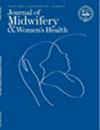Altered Abdominal Muscle Recruitment and Declined Physical Function in Postpartum Individuals With Pregnancy-Related Pelvic Girdle Pain: A Matched Case-Control Study
Abstract
Introduction
The influence of pregnancy-related pelvic girdle pain (PPGP) on lumbopelvic muscles has not been comprehensively examined in postpartum individuals. Previous research also presented self-reported activity limitations without objective measures.
Methods
Thirty postpartum individuals with PPGP (PPGP group) and 30 age-, parity-, and postpartum duration–matched asymptomatic individuals (healthy group) were recruited. Transabdominal ultrasonography was used to measure muscle thickness or activation changes of the external oblique (EO), internal oblique (IO), transverse abdominals, lumbar multifidus, and pelvic floor muscles (PFMs) during rest and while performing the active straight leg raise (ASLR). Muscle changes were compared separately in the painful and nonpainful sides between the PPGP and health control group. Physical function was assessed using the ASLR fatigue (ASLRF), timed up-and-go, and 6-m walking (6MW) tests.
Results
The PPGP group had greater thickening changes in the bilateral IO during ASLR compared with the healthy group (nonpainful side, 16.34 vs 3.52 mm; P = .010; painful side, 18.83 vs 6.60 mm; P = .02) but became thinner in the EO (nonpainful side, −2.19 vs 19.97 mm; P < .001; painful side, −5.97 vs 21.43 mm; P < .001). Thicker IO and EO on the nonpainful side (IO, 6.60 vs 5.78 mm; P = .004; EO, 5.37 vs 4.54 mm; P = .011) and a lower bladder base (indication of PFMs) (91.87 vs 78.61 mm; P = .002) during rest were also observed in the PPGP group. Furthermore, the performance of the ASLRF and 6MW tests was poorer in the PPGP than in the healthy group (ASLRF nonpainful side, 82.36 vs 59.09 sec; P = .01; painful side, 75.73 vs 59.26 sec; P = .04; 6MW, 3.48 vs 3.17 sec; P = .02).
Discussion
Postpartum individuals with PPGP demonstrated altered abdominal muscle recruitment strategies during loading tasks, with objectively impaired physical functions. These findings are critical for developing effective muscle training interventions for PPGP.

 求助内容:
求助内容: 应助结果提醒方式:
应助结果提醒方式:


